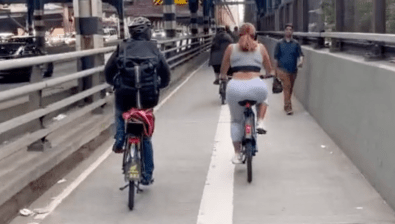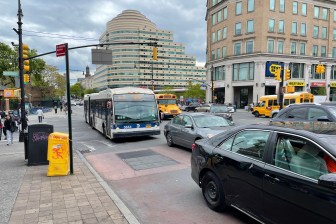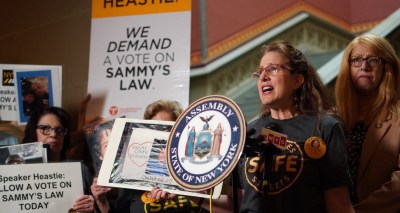The City That Never Walks
The messenger is unexpected — Robert Sullivan, a contributing editor at Vogue magazine — but the message to Mayor Bloomberg on today’s New York Times op/ed page is clear: It is time to act. When it comes to building a more livable urban environment and reversing automobile domination, New York City is falling behind other world cities. In fact, we’re even lagging behind a number of American cities too, Sullivan writes:
I am saddened to see our city falling behind places like downtown Albuquerque, where one-way streets have become more pedestrian-friendly two-way streets, and car lanes are replaced by bike lanes, with bike racks everywhere. Then there is Grand Rapids, Mich., which has a walkable downtown with purposely limited parking and is home to a new bus plaza that is part of a mass transit renaissance in Michigan.
The editorial references three recent Transportation Alternatives’ studies and touches on so many stories that we’ve been covering, that I’ve created a version of the article with embedded links to Streetsblog and other sources. It’s such a good, comprehensive little piece, it’s hard to decide what to excerpt, so I’ll just leave it at this:
"Roads no longer merely lead to places; they are places," wrote John Brinckerhoff Jackson, the landscape historian. We’ve already lost a lot of New York to traffic. If New Yorkers don’t get out of their cars soon, the city’s future residents won’t have a reason to.





